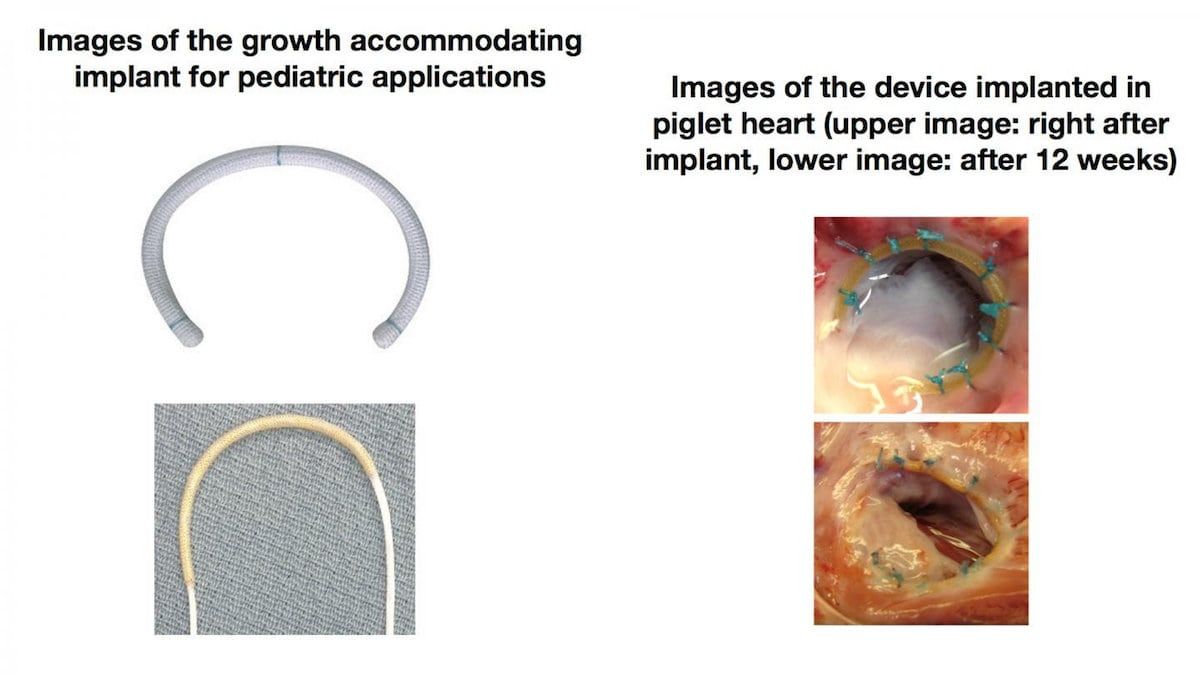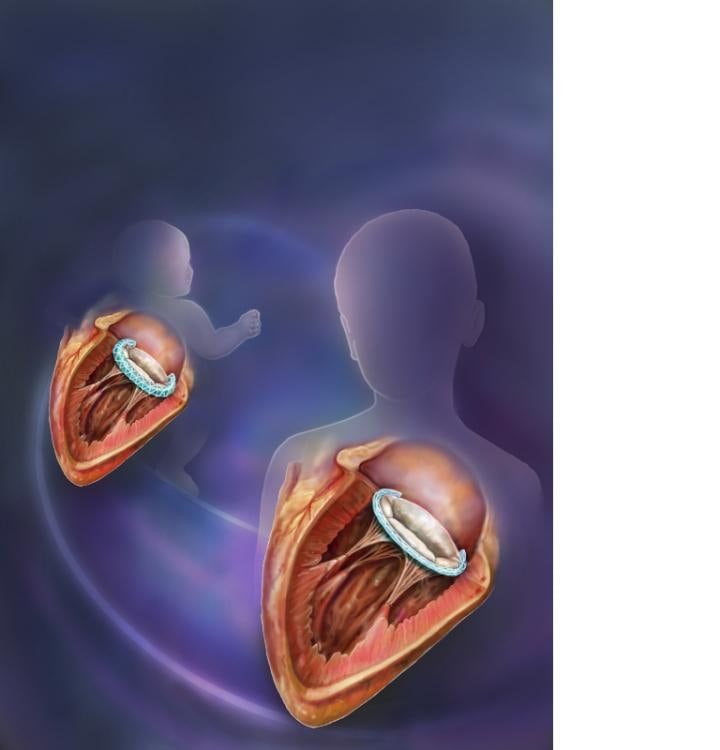A medical implant to correct congenital heart defects has been developed that grows with the child.
The use of such devices has been thwarted because they are a fixed size – and cannot expand as young patients get bigger.
Scientists said the new growth-accommodating implant inspired by a toy could revolutionise cardiac repair – and also be adapted to correct diseases in other parts of the body.
Co senior author Professor Pedro del Nido, chief of cardiac surgery at Boston Children’s Hospital, said: “Medical implants and devices are rarely designed with children in mind, and as a result, they almost never accommodate growth.
“So, we have created an environment here where individuals with expertise and interest in medical devices can come together and collaborate towards developing materials for paediatric surgery.”
The device described in Nature Biomedical Engineering is aimed at boosting the durability of paediatric heart valve repairs while also accommodating a child’s growth.
It is based on a children’s toy called a Chinese finger trap, used to play a practical joke

It traps the victim’s fingers in both ends of a small cylinder woven from bamboo. They must push their finger farther inside the trap for it to loosen.
Co first author Dr Eric Feins, of Massachusetts General Hospital, said: “The implant design consists of two components: a degrading, biopolymer core and a braided, tubular sleeve that elongates over time in response to the tensile forces exerted by the surrounding growing tissue.
“As the inner biopolymer degrades, the tubular sleeve becomes thinner and elongates in response to native tissue growth.”
To create the degrading core, the researchers used an extra-stiff, biocompatible polymer that begins to erode on its surface following implantation.
The polymer itself is made of components that already exist in the human body.
Co senior author Professor Jeff Karp, of Brigham and Women’s Hospital (BWH), Boston, said: “By adjusting the polymer’s composition, we can tune the core to degrade predictably over a pre-determined amount of time.”
The biomedical device company CryoLife Inc. is already developing the researchers’ concept into a growth-accommodating implant for paediatric heart valve repair.
Prof del Nido said: “In combination with the braided sleeve exterior, this two-part implant concept could have many medical applications beyond the most obvious ones to enhance cardiac valve surgery in children.”
The design of the braided sleeve doesn’t just share resemblance to a Chinese finger trap but also to an organic structure engineered by nature itself.

Co first author Dr Yuhan Lee, PhD, co-first author on the study and a materials researcher at BWH, said: “We solved this problem of growth accommodation with a concept that already exists in nature: the octopus has a special ability to stretch its arms into confined cracks and spaces between rocks, in search of its prey.
“It can do this because of unique, braid-like crossfibers of connective tissue that enable the simultaneous elongation and shrinking diameter of its arms, allowing it to extend its reach two to three times beyond the original arm length.”
This type of elongating movement is also found in natural tissue structure of the human intestines and gullet.
Added Dr Feins: “This concept could be adapted for many different clinical applications, with exciting potential to be converted into an actively – rather than a passively – elongating structure that could act as a tissue scaffold encouraging growth.”
https://www.thelondoneconomic.com/lifestyle/new-way-mend-broken-heart/29/09/

